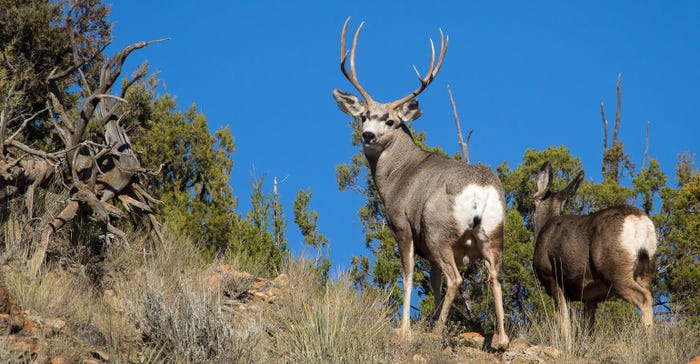
Everyone has looked at their farm or ranch at one point and thought to themselves, “We could start a little agritourism enterprise here. How hard can it be?”
Well, before you buy the pumpkin seeds, invite movie location scouts or put up that barn for a rustic wedding venue, you might want to take a beat and think your plan through.
Been there, tried that
That was the advice from a panel of experts who spoke on adding enterprises like these and others in February, during the 2022 Cattlemen’s College in Houston.
Andrew Donnell operates Donnell Century Farm, near Jackson, Tenn. The farm is a working row crop and Angus cattle operation; but it also has an agritourism enterprise, and it offers direct sales of beef from the family’s herd. Donnell said he knew, when returning to the family farm, that he needed to add some sort of enterprise to sustain multiple generations. The family started out selling production at the nearby farmers markets on Saturdays, and that has evolved into an agritourism destination for area families to enjoy year-round. During the pandemic, they also expanded their commercial kitchen, partnered up with a local butcher, and started selling their ranch-raised Angus beef to consumers who were unable to find beef in their stores.

Steve Wooten and his family run the Beatty Canyon Ranch, in drought-prone southeastern Colorado. The ranch was the national 2020 Environmental Stewardship Award winner. This ranch supports three generations with its day-to-day operations, which include a cow herd, as well as hunting and environmental and historical tourism ventures that were begun in the 1990s and have expanded today.
Stephanie Mock is the sustainability manager for Kualoa Ranch, on the island of Oahu in Hawaii. This 4,000-acre ranch was purchased in 1850 from King Kamehameha by Dr. Gerrit P. Judd. The seventh and eighth generation of the Judd family still farm and ranch on the land, and they’ve been able to do so by adding tourism ventures to their crop and livestock production, starting in the 1980s. The ranch may be familiar to many — it has been used as a location in movies and television, including the “Jurassic Park” films.
Think differently
The panel agreed that as you consider adding an enterprise to your family’s farm or ranch, you need to consider what that particular enterprise’s impact might be on the day-to-day operations of raising crops and livestock. The goal is to add to the farm, not wind up with an operation that takes labor or resources away from the farm.
For example, on the Beatty Canyon Ranch in Colorado, Wooten said it was important that their added enterprises work in cooperation with the conservation practices already in place on their grazing lands.
“In the early 1990s we started with ranch vacations and hunting,” Wooten said. “We choose for the wildlife and our cattle to get the natural resources. Nothing we add to the operation can be competitive with those two income streams. It was important that they not be consumptive of our natural resources.”
The panel offered these 10 points of advice for others considering added business enterprises:
Look at your available resources and your interests before committing to a business enterprise. For Donnell, the family Angus cattle herd provided an opportunity to market beef to customers looking for locally sourced food
Start small and leave room to expand. The Wootens started out with simple chuck wagon camping experiences on the nearby canyon rim. They later added overnight cabin accommodations for business retreats, weekends for artists to enjoy the canyon, hunting excursions for youth and women hunters, and excursions to historic destinations on the ranch.
Contract services and tours to an outside provider. For example, Kualoa Ranch doesn’t plan weddings, but the owners rent their beautiful land to outside wedding planners to use. It provides an economic boost to the ranch, but also to the nearby community as well.
Think like a customer, not a farmer. You must have liability on your mind. Guest safety and comfort is critical. For Kualoa Ranch, that means switching from single-rider ATV tours to multirider UTV tours for comfort and convenience. Beatty Ranch no longer provides horses for guests to ride, but allows guests to bring their own horses to ride.
Don’t be afraid to change your business to meet customer needs or changing labor resources. In the 1980s, Kualoa Ranch took advantage of the boom in Japanese tourism to the islands and offered everything from helicopter tours to scuba excursions and horseback riding. Today, its offerings now include providing venues for weddings and movie locations.
Make sure you have a retail component to your agritourism business. Mock says customers want to be able to take a piece of their experience home with them. So whether that’s homegrown fruits and vegetables, or hand-stitched Western apparel and home goods, give your guests options.
Do it for the ’gram — Instagram, that is. Donnell started growing flowers for a U-pick-it experience for customers, and as backdrops for Instagram photos. Scenic backdrops are in demand for social media mavens, and your farm’s rustic scenery may be ideal for paying customers.
History buffs travel, too. Wooten’s family settled in an area with prehistoric glyphs from native people that also boasts historic remnants of the Old West time period. Offering guided tours shares that history with guests and provides resources to protect them as well.
Consider “voluntourism” and “ecotourism.” These are opportunities to share your ranch and have guests paying for the opportunity to work on the ranch.
Keep your reason top of mind for operating the business. “Ask yourself, what is the legacy?” Donnell advised. “We’re passing ours on to the next generation, to provide an opportunity for them to come home from college or wherever and give them an opportunity to make a living.”
About the Author(s)
You May Also Like






